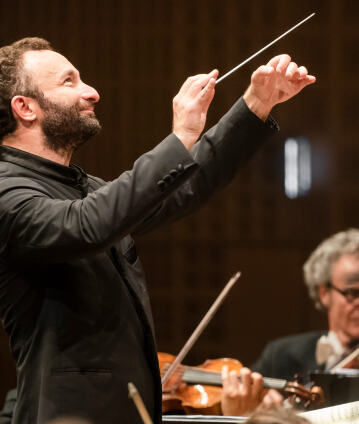Kirill Petrenko conducts Mahler’s Sixth Symphony

For the first time, Kirill Petrenko presents himself with the Berliner Philharmoniker as an interpreter of Mahler. The Sixth Symphony is one of the composer’s most disturbing works, bringing together turmoil and idyll, triumph and catastrophe, nature, and life and death. It conveys a world panorama as well as an intimate insight into Mahler’s inner world. For as his widow Alma explained, “No work has flowed from his heart as directly as this”.
Kirill Petrenko will show himself from very different musical angles during his first season as Chief Conductor of the Berliner Philharmoniker. At these concerts, he can be experienced interpreting Mahler for the first time with his new orchestra. The programme consists of the Sixth Symphony. The Mahler cycle that he has been carrying out since 2008 with the Symphony Orchestra Vorarlberg in Bregenz has given Petrenko the opportunity to engage intensively with the composer’s oeuvre and develop his own interpretation.
The Sixth Symphony is one of Mahler’s most unsettling pieces: turmoil and idyll, triumph and catastrophe, march and chorale, confidence and resignation, nature, life and death – Mahler combines it all to create a vast musical cosmos. “How can a man of your goodness express so much harshness and cruelty”, a friend is supposed to have asked the composer. Mahler – it is said – responded: “It is the cruelty which has been inflicted on me, and the pain which I have had to suffer!” From the beginning of the first movement with its inexorably stomping march theme to the grandiose Finale, in which Mahler symbolises the merciless striking of fate with two massive hammer blows, the composer conjures up a dark, pessimistic, even apocalyptic underlying mood that is only temporarily interrupted by bright, hopeful moments in the Andante moderato and the dancing style of the Scherzo. The Sixth Symphony is considered a prophetic work by Mahler, an anticipation of personal and societal catastrophes. “No work flowed so directly from his heart as this one,” Alma Mahler, the composer’s widow, writes in her memoirs. “We both wept that day. So deeply did we feel this music, and the presentiment it betrayed.”
When compared with the previous Fifth Symphony, Mahler significantly expanded the instruments he used. The woodwind and brass instrument groups increased substantially, and he also enlarged the percussion section: besides the hammer already mentioned, cowbells, deep bells, xylophones and rute are used. The composer stated that he was not interested in merely striving for effect; instead, he stressed that, particularly with the drum instruments, he intended to create new mixtures of sound.
© 2020 Berlin Phil Media GmbH
Related interviews